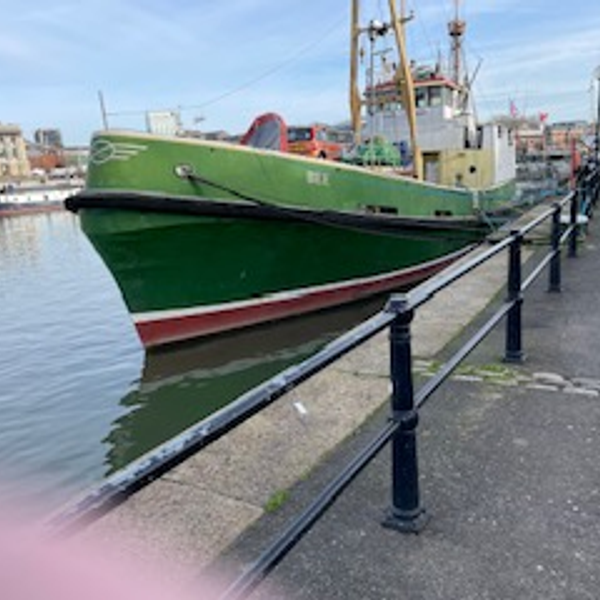Walking Words: Wapping Wharf to Bathurst Basin
room 4 ECHOES
Location: Bristol, City Of Bristol, England, United Kingdom
Poems by Agata Palmer
The original Bristol Harbour Railway was a joint venture by the GWR and the Bristol and Exeter Railway, opened in 1872 between Temple Meads and the Floating Harbour. Its route included a tunnel under St Mary Redcliffe church and a steam-powered bascule bridge over the entrance locks at Bathurst Basin. In 1876 the railway was extended by 1⁄2 mi (800 m) to Wapping Wharf. In 1906, new branches from the south via the Ashton Avenue swing bridge were built to Canons Marsh on the north side of the Floating Harbour and to Wapping via a line alongside the New Cut. A Coal Concentration Depot owned by Western Fuels was established at Wapping Wharf just behind the Industrial Museum but this closed in 1987.
The Bristol Gaol Site
The original New Gaol was designed by Henry Hake Seward and opened in 1820. In 1831, it was destroyed during the Bristol Riots and was rebuilt to designs by Richard Shackleton Pope, but was never properly completed until 1872. The gaol was closed in 1883 due to poor conditions and was largely demolished in 1898. In 1884, Horfield Prison was built to replace it.
In 1821, three days after his eighteenth birthday, John Horwood was the first person to be hanged at the Gaol for murdering Eliza Balsum by hurling a pebble at her which hit her on the right temple and she then tumbled into a brook.
English Heritage designated The Gaol entrance wall and gateway and the south-east perimeter wall as a Grade II listed building. It is now the centre-piece of a redevelopment project in this area of the city.
Bathurst Basin
Bathurst Basin is a small triangular basin adjoining the main harbour of the city of Bristol, England. The basin takes its name from Charles Bathurst, who was a Bristol MP in the early 19th century.[1]
The basin was built on an area of an old mill pond, Trin Mills.[i] The pond was supplied by the River Malago, from Bedminster to the South. It lost its water supply as the New Cut was created in 1809, running to the South of the enlarged Floating Harbour and catching the flow of the Malago. After this it formed a connecting basin, through two sets of locks, between the Floating Harbour and the tidal River Avon in the New Cut.[2] The connection enabled smaller vessels to bypass the main entrance locks in Cumberland Basin. From 1865 a deep water dock with a stone quay front was built. The area used to be an industrial dock with warehouses and numerous shipyards at the adjoining Wapping Shipyard and Docks, including Hilhouse, William Scott & Sons and William Patterson. Now there is a small marina, with residential quayside properties.
The Bristol Harbour Railway connected to the main line system at Temple Meads, via a lifting bascule bridge over the northern entrance dock to the basin and a tunnel beneath St Mary Redcliffe. The tunnel still exists, but is now blocked,[ii] and the original railway bridge has been replaced with a swing footbridge. This bridge is manually swung by a hydraulic pump action.(wikipedia)
The Echoes

Off the Rails: Wapping Wharf to Bathurst basin
Poem by Agata Palmer

Off The Rails -Containers
Poem by Agata Palmer

Off the Rails- Louisiana and Bathurst Basin
Poem by Agata Palmer

Meditative State (Background music)
Electronic composition bt Vital
Discover more geolocated content in our apps.
Or start creating tours, treasure hunts, POI maps... Just let your imagination guide you.